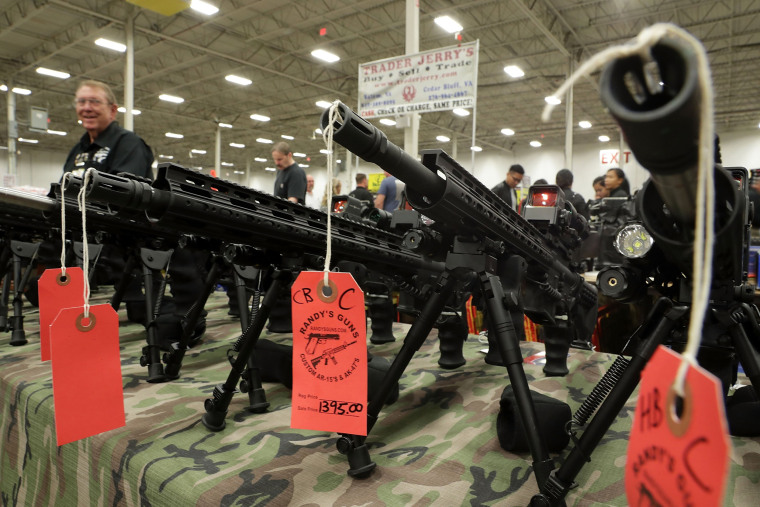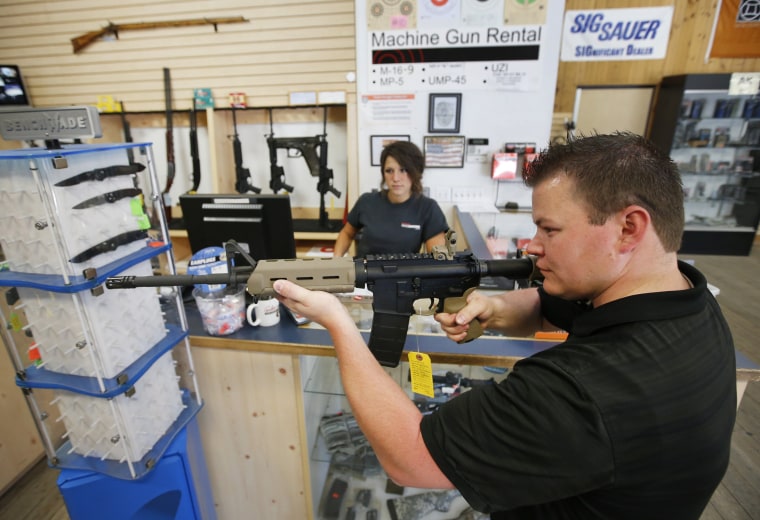An assault rifle is designed to deliver fatal wounds to multiple individuals within a short time period; it has no other purpose. The AR-15, the civilian version of the military assault rifle (M16 or M4), has become the most commonly used rifle in US mass shootings; the recent shootings in Parkland and Las Vegas, for instance, testify to the effectiveness of this weapon’s design. It was made for the military, to allow members of the armed forces to better dispatch multiple enemies in short order; in the hands of civilians, it not only clearly serves the same purpose for some individuals, but it’s unclear what other purpose it could serve, given how and why it was made.
Given that, there is no reason that these weapons should be broadly available to the civilian population. But, given that they are, let’s all understand how they are designed to kill people, not simply to shoot targets for fun.
The effectiveness of these weapons comes, first and foremost, from their ability to deliver relatively small sized, high velocity bullets in rapid sequence into a body, inflicting lethal damage.

The killing potential of a gun is primarily based on the amount of energy imparted by the bullet when it strikes the body. The bullet’s kinetic energy is equal to half of the bullet weight multiplied by the speed of the bullet when fired, squared — in other words, the velocity that a gun can impart on a bullet is the dominant factor in determining its killing potential.
The 9mm handgun is generally regarded as an effective weapon; its bullet travels at 1,200 feet per second and delivers a kinetic energy of 400 foot pounds. By comparison, the standard AR-15 bullet travels at 3,251 feet per second and delivers 1300 foot pounds.
Tissue destruction of the AR-15 is further enhanced by cavitation, which is the destruction of tissue beyond the direct pathway of the bullet; this occurs with high velocity bullets because their kinetic energies are over 2,500 foot pounds.

To compare again, a typical 9mm handgun wound to the liver will produce a pathway of tissue destruction in the order of 1-2 inches. In comparison, an AR-15 round to the liver will literally pulverize it, much like dropping a watermelon onto concrete results in the destruction of the watermelon. Wounds like this, as one sees in school shootings like Sandy Hook and Parkland where AR-15s were used, have high fatality rates.
The AR-15 is, by design, easier to shoot accurately and rapidly than a a typical hunting rifle because it mitigates recoil. The standard AR-15 bullet, as previously stated, carries kinetic energy of 1300 foot pounds; a typical hunting rifle bullet has between 2600 and 4000 foot pounds, meaning it has greater recoil. The excessive recoil of a hunting rifle precludes rapid firing on target, because of the obligatory motion of the gun and its impact on the shooter. But the moderate energy of the AR-15 allows shooting on target literally as rapidly as the trigger can be pulled, while providing ample bullet speed to inflict lethal wounds.
The efficiency of the AR-15 is further compounded by large capacity ammunition magazines that permit feeding 30 or more bullets into the rifle without reloading.

Mass shootings with high fatalities are fundamentally the result of the combination of a deranged individual who wants to end the lives of a large number of random humans and his or her ability to access an assault rifle. And while there is no real debate about the need for improved mental health care in the United States, any discussion of limiting civilians’ access to assault rifles has been a political non-starter for far too long. We’re not likely to be able to institutionalize every person who might be willing to commit a heinous crime, but we can take away their access to the most lethal weapon for doing so with a stroke of a pen.
As a trauma surgeon for 40 years (and avid hunter for much longer), I am dismayed that we remain paralyzed over preventive measures. There have already been 18 school shootings in 2018, when one would be too many: This cannot remain a political issue when it is clearly an issue of common sense.
Ernest E Moore, MD, is the editor of the Journal of Trauma.
